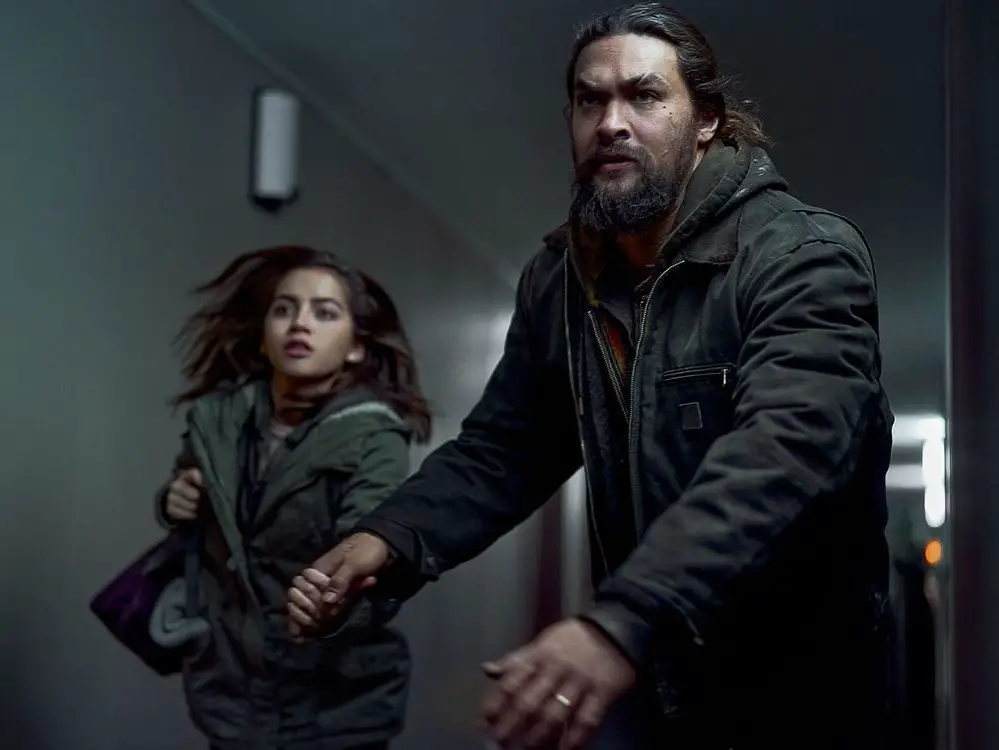The intimidating and quick-tempered father who kills to protect his beloved parental counterpart and baby girl is a frequently spotlighted character archetype in revenge thrillers. His dedication to his family and thirst for righting wrongs drive an action-packed plot until justice is served. Such is the case with Ray Cooper in the Netflix original “Sweet Girl” — that is, until his persistent fight for his family takes an unexpected, yet remarkable, turn.
Ray’s wife, Amanda, suffers from a rare type of cancer, but there’s a potential in-the-works drug that could save her. Days before the beginning of her treatment, however, BioPrime CEO Simon Keeley pays the drug’s manufacturer to delay its release. As a result, Amanda dies, leaving Ray a widower and his 18-year-old daughter, Rachel, motherless.
Half a year goes by until journalist Martin Bennett reaches out to Ray, claiming that he has evidence of “crimes that can land some very powerful people,” such as Keeley, “in jail.” Bennett and Ray decide to meet on a subway. And, despite Ray’s disapproval, Rachel secretly follows them. Before Bennett has a chance to share the evidence, he is murdered by a hitman.
Ray goes after the hitman but fails to take him down. The hired killer stabs Ray, knocks out Rachel and flees the scene. Obsessing over BioPrime’s misdeeds years later, Ray begins a vengeful journey to take down and expose those responsible for the death of his wife while protecting his daughter along the way.
As of Aug. 25, “Sweet Girl” holds the No. 1 spot on Netflix’s top 10 chart in the United States. For its thrilling cinematography, character development and unique storyline twist, “Sweet Girl” is worth a stream.
Cinematic Fight and Chase Scenes
At the outset, “Sweet Girl” leaps ahead to a pivotal scene: Ray stands on the roof of a baseball stadium. The FBI surrounds him on foot and by helicopter. A river down below offers him an escape. Despite an officer’s plea to get back to safety, he jumps.
The captivating chase and turbulent ambiance within the first two minutes of the two-hour film whet viewers’ appetite for a classic dish of revenge, served cold. “Sweet Girl” makes a character who goes the extra mile to enact justice worth observing. Ray repeatedly fends off greedy figures for the sake of his family, and the film’s refined cinematography makes his endeavors emotional, realistic and eye-catching.
A cinematic masterpiece aims to place an audience inside the action. As each chaotic scene unfolds in the Netflix original, viewers transition from mere subscribers to bystanders. If “Sweet Girl” excels in one movie-making element above all, it’s cinematography.
Capturing intricate details of an intense fight scene — punches, blood, enraged facial expressions — is challenging. Despite this, “Sweet Girl” manages to create brutal and daunting physical encounters between Ray and his enemies.
In Ray’s gruesome brawl with Keeley and his bodyguards, shifting camera angles allow viewers to see the fight from the perspective of Ray and the bodyguards. In one shot, Keeley has the upper hand and finds an opportunity to hurt Ray while he’s on the ground, but in the next, Ray attacks Keeley from the floor, aiming for his knee.
The camera motion in shots alternates between zooming in and out on a character to closely follow each party’s movements. Nothing flows smoothly in a physical fight or a chase in real life, so the unsteady camera motion makes each scene feel real and raw — disorganized, out of control and true to reality.
By showcasing an action-packed hunt for revenge, the superb cinematography places viewers in the vulnerable shoes of Ray and Rachel — two characters who use their father-daughter bond to go against all odds.
The Growth of Ray and His ‘Sweet Girl’
Character growth allows viewers to personally connect with on-screen figures. Their emotional depth and room for development leave a lasting impression on the audience. Such is the case for Ray and Rachel, who grow into fighters for a good cause after a devastating loss.
“Aquaman” star Jason Momoa brings the tough and resilient Ray to life. Momoa’s serious demeanor and built figure perfectly portray an intimidating man that won’t back down from a challenge. And yet, when it comes to Ray’s family, his soft and vulnerable side comes to light.
Viewers see how gentle and protective he is with his only child. Momoa successfully conveys a powerful figure who can seek vengeance on wrongdoers yet remain patient and compassionate with his loved ones. In fact, right before Ray’s wife loses her battle with cancer, he calls in to threaten Keeley during a televised debate: “If my wife dies, it’s your death sentence. I will hunt you down and kill you with my bare hands.” Despite his anger, shortly after Amanda passes, Ray exits her room and rushes to an empty space, where he sobs uncontrollably.
Momoa’s acting range perfectly reflects a man who, despite his need for support, manages to push beyond adversity. He transitions from a man in mourning to a man in need of justice.
But Ray couldn’t move forward, of course, without the help of his daughter. Known for her role in “Transformers: The Last Knight,” Isabela Merced ignites a youthful fire in Rachel. She cries and holds onto her mother tightly while she passes, but becomes physically dominant after the hitman attacks. Viewers witness her development from a weak and passive teenager to a spitting image of her father.
What makes the pair’s revenge story so appealing is their ability to work together as a father-daughter duo. Their mutual hatred for BioPrime drives them to get revenge, even if arguments about safety and taking things too far slightly delay their progress.
Momoa and Merced portray emotionally diverse characters, and their compatibility on-screen makes “Sweet Girl” a story of not only revenge but also of family bonds.
The Plot Twist
Without giving away the essential and astonishing plot twist, Rachel takes everything she learns from her father to a whole new level. The hunt for revenge starts with a bang after the hitman’s attack, and it leads back to the beginning scene with a suspect standing on the roof of a baseball stadium.
“Sweet Girl” catches the audience off guard and makes them question everything they thought they saw. At first watch, subtle hints at the plot twist are evident, but not obvious. The typical father who goes on a killing spree to protect his significant other and young daughter is twisted to present a brand-new storyline.
In a Netflix Film Club YouTube video, Momoa and Merced discuss the plot twist scene shot by shot. “This is the moment where everything comes to fruition and a twist happens,” Momoa said. While sharing some fun facts from behind the scenes, the actors break down the pivotal twist and explain its relevance to the bond between father and daughter.
Through its cinematographic elements, “Sweet Girl” captivates audiences with its adrenaline-pumping fight scenes as viewers root for Ray and Rachel. The pair’s bond and emotional rapport make the desire for revenge permissible, even though a surprising twist forces viewers to adjust their perspectives and appreciate the narrative from a whole new interpretation.
“Sweet Girl” tells a compelling revenge story with a father-daughter duo and a great turnabout to enhance it. For a movie surrounding a classic case of vengeance, it does well in enticing viewers with something new and leaving them with their thirst for revenge quenched.

















